Blizzard for the ages
In 1986, Winnipeg got hit with a storm the likes of which it hadn't seen since 1966
Advertisement
Read this article for free:
or
Already have an account? Log in here »
To continue reading, please subscribe:
Monthly Digital Subscription
$0 for the first 4 weeks*
- Enjoy unlimited reading on winnipegfreepress.com
- Read the E-Edition, our digital replica newspaper
- Access News Break, our award-winning app
- Play interactive puzzles
*No charge for 4 weeks then price increases to the regular rate of $19.00 plus GST every four weeks. Offer available to new and qualified returning subscribers only. Cancel any time.
Monthly Digital Subscription
$4.75/week*
- Enjoy unlimited reading on winnipegfreepress.com
- Read the E-Edition, our digital replica newspaper
- Access News Break, our award-winning app
- Play interactive puzzles
*Billed as $19 plus GST every four weeks. Cancel any time.
To continue reading, please subscribe:
Add Free Press access to your Brandon Sun subscription for only an additional
$1 for the first 4 weeks*
*Your next subscription payment will increase by $1.00 and you will be charged $16.99 plus GST for four weeks. After four weeks, your payment will increase to $23.99 plus GST every four weeks.
Read unlimited articles for free today:
or
Already have an account? Log in here »
Hey there, time traveller!
This article was published 08/11/2020 (1859 days ago), so information in it may no longer be current.
Before you read this piece, take a look outside your window. Is there a blizzard raging? Is there an ever-thickening blanket of drifted snow on your sidewalk? Are there snowmobiles zipping around abandoned cars in the street? Can you see anything other than white?
After you look outside, flip to the front page of your Free Press and look at the headline. Does it read “Near blizzard ushers in Winnipeg winter?” Is there an article promising more centimetres on top of 15 that has already fallen? Again, no?
We can count ourselves lucky. Today marks 34 years since the blizzard of 1986: a historic weekend storm that showcased winter’s wrath early and has stuck in the minds of many around these parts as an unforgettable and trademark Winnipeg weather event.
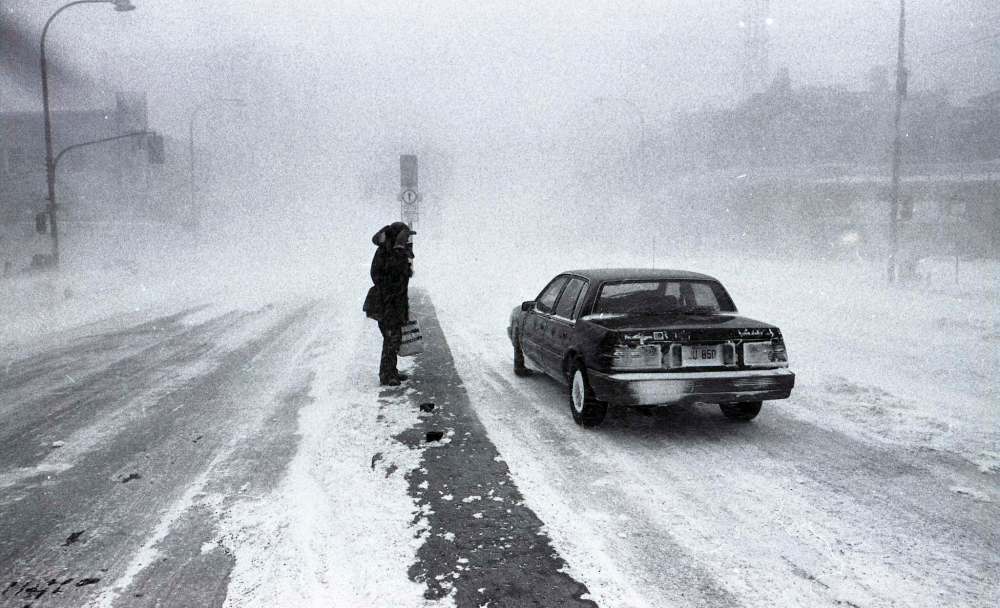
The pictures from the day are indelible. A trio of poor souls trying to push a car hopelessly stuck on Portage Avenue near Carlton Street. People shovelling thigh-high drifts whipped up by 90-km/h wind gusts. Snow piles that made Manitoba look downright mountainous.
It all began in the afternoon of Friday, Nov. 7, when working stiffs were undoubtedly thinking of their weekends, perhaps of their plans to catch the No. 1 movie, Crocodile Dundee, or to see the Winnipeg Jets take on the St. Louis Blues at Winnipeg Arena that evening, or to see the hometown team tangle with the New Jersey Devils on Sunday.
The Free Press that morning contained a four-word, two-digit warning, next to the masthead. “Snow today -2, snow tomorrow, -1.”
But that didn’t prepare Winnipeggers for the scope of the storm: over the next two days, more than 35 cm fell upon the city. It was the largest snowstorm since the famous March 4, 1966, blizzard.
The storm was a classic Colorado Low, explains Rob Paola, a retired Environment Canada meteorologist with more than 30 years of experience who maintains a weather station in his Charleswood backyard.
“It did track a bit further west than we had anticipated,” Paola, at the time a junior forecaster on his first posting with Environment Canada, recalled in a recent phone conversation. “We got more snow and stronger winds than we had expected for the city of Winnipeg… it ended up hammering us harder than we expected.”
“We were expecting the worst of it to hit southeastern Manitoba and northwestern Ontario, and Winnipeg would be kind of on the western edge…” Paola said.
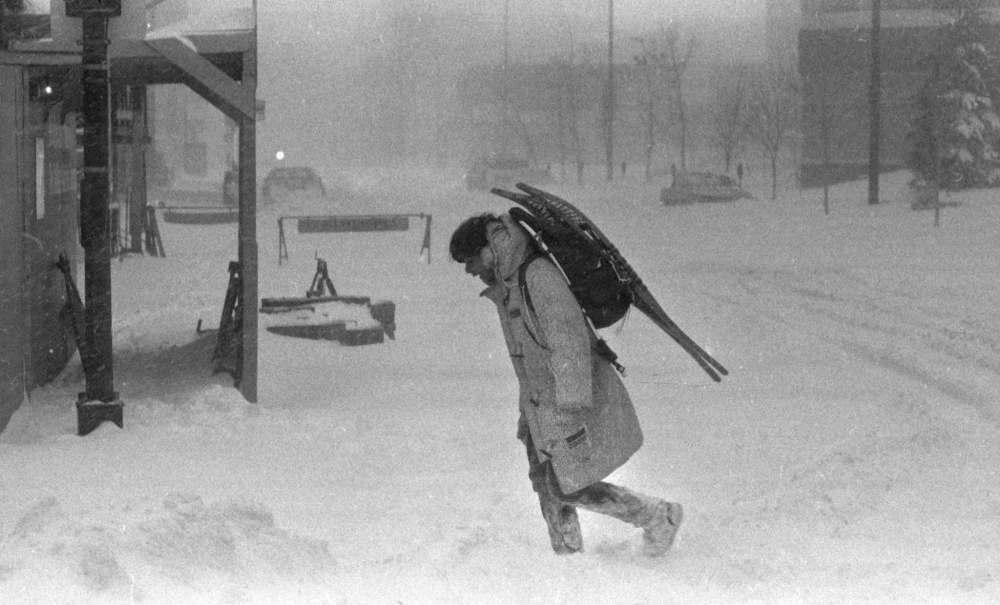
The storm tracked over Lake of the Woods, which “puts southern Manitoba and the Red River Valley in the sweet spot of a Colorado Low,” Paola explained.
At one point, there were 12 straight hours of near-zero visibility, Paola said. That led to the cancellation of hundreds of flights and stranded people in the airport for two days; the Trans-Canada highway east of the city was also shuttered.
Paola had just arrived to Winnipeg from the Niagara region of southern Ontario that spring. He recalled trekking to the Environment Canada office on Graham Avenue from his place on Colony Street on Saturday morning as the storm swirled. Talk about a true Winnipeg welcome.
“My first experience (in Winnipeg) is this extreme blizzard,” Paola said. “I thought ‘Wow! This is going to be a fun place to work…’ but even for Winnipeg, this was a once in a 20- or 30-year event.”
Paola ended up pulling a 24-hour shift, as he was one of the few staffers who could actually make it in.
“It was all overtime because I wasn’t scheduled to do that,” he said. “As a junior forecaster, I loved the overtime and I was also quite excited about the storm. To me, this was a great experience,” he said, but acknowledged many others were put out by it.
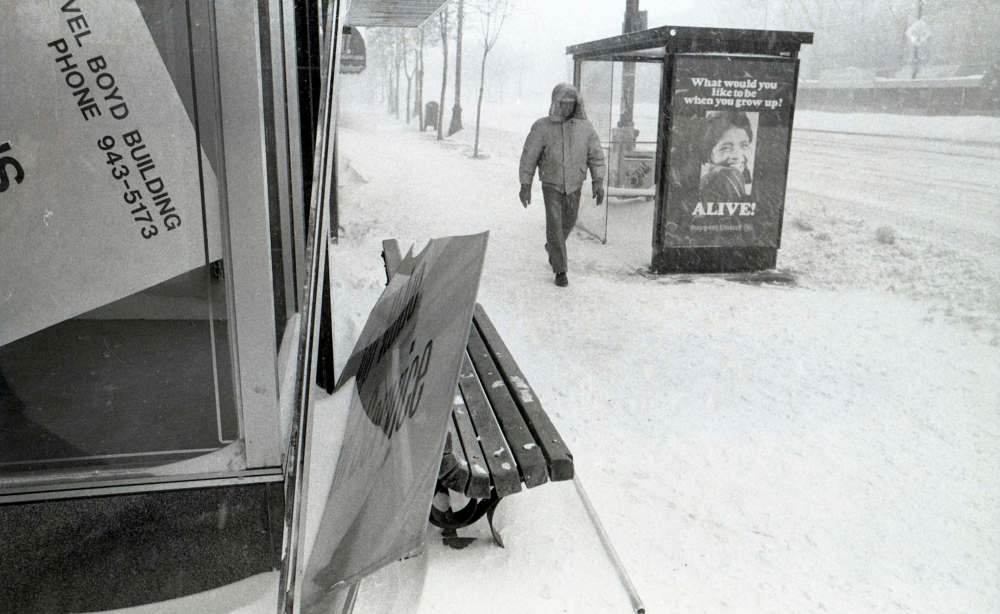
Even though there have been plenty of other blizzards since 1986, a lot of ’Peggers, just like Paola, still have a clear recollection and vivid memories of where they were and what they were doing when the storm hit, and how they managed in its aftermath.
The storm intensified into Saturday, so while many were able to get home from work Friday evening, they became snowed in for the weekend. Some fared better than others.
For Kristy Dawn, it was the “best weekend ever” and her “first taste of freedom.”
Her parents were stuck on the other side of town, so Dawn threw a party. She and her friends ate everything in sight, watched movies and played drinking games with what her friends looted from their parents’ liquor cabinets, she said.
“My parents came home on the Monday and things were not that fabulous anymore. I think I was grounded for a month. Didn’t care though, it was all worth the punishment.”
Cathy Gilmore was stranded with a group of mostly-bachelor male co-workers at one of the guys’ apartments. There was nothing in the pantry but macaroni, margarine, and tea, she remembers
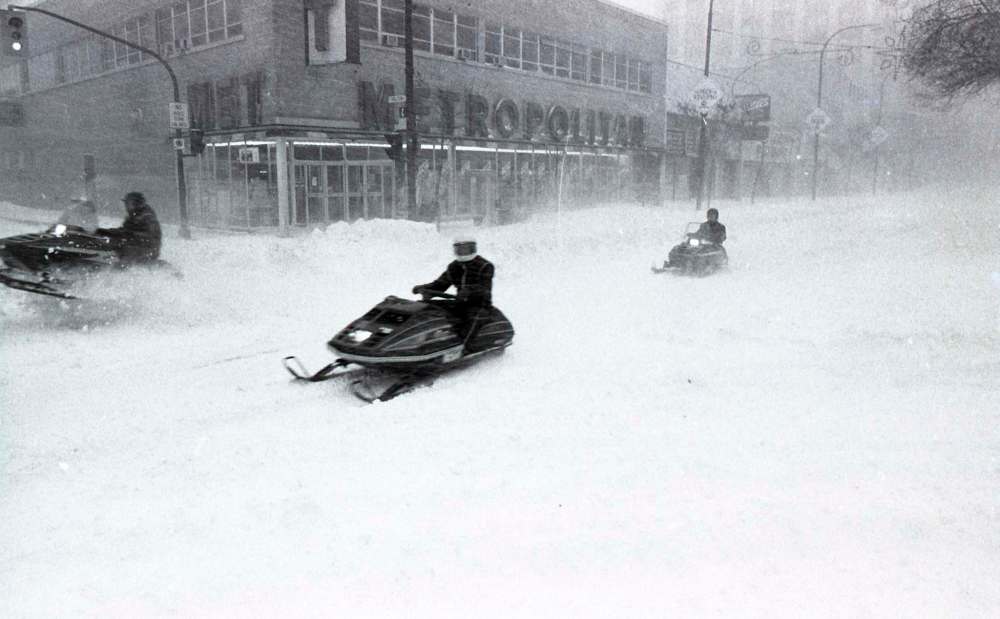
Two of the guys somehow made it to the Norlander Inn (on Pembina Highway) and bought bags of chips, chocolate bars, and Cokes,” Gilmore said. Meanwhile, at Gilmore’s own apartment, her husband and sister’s boyfriend chowed down on the bevy of groceries she and her husband had just bought a day before.
Andre Silvanovich’s Friday night meet-up with friends for drinks at a Portage Avenue club turned into a weekend-long hang out.
“We left at 10-ish and the snow was getting bad. The plan was to drive them home, one in South St. Vital and the other near the U of M,” he said. “We made it as far as Main and Broadway when I headed back to my place on Westminster… I had houseguests for three days until they were able to catch a bus home.”
They enjoyed many more beers, Silvanovich reported. In fact, they enjoyed beers until they ran out.
But not everyone had the option to stay indoors, or did. Some trekked out to work, or hit the snow-covered streets to help those in need.
Caelum Vatnsdal recalled a “post-apocalyptic” slog from his Riverview home to his job as a clerk at the now-shuttered Movie Village on Osborne and River.
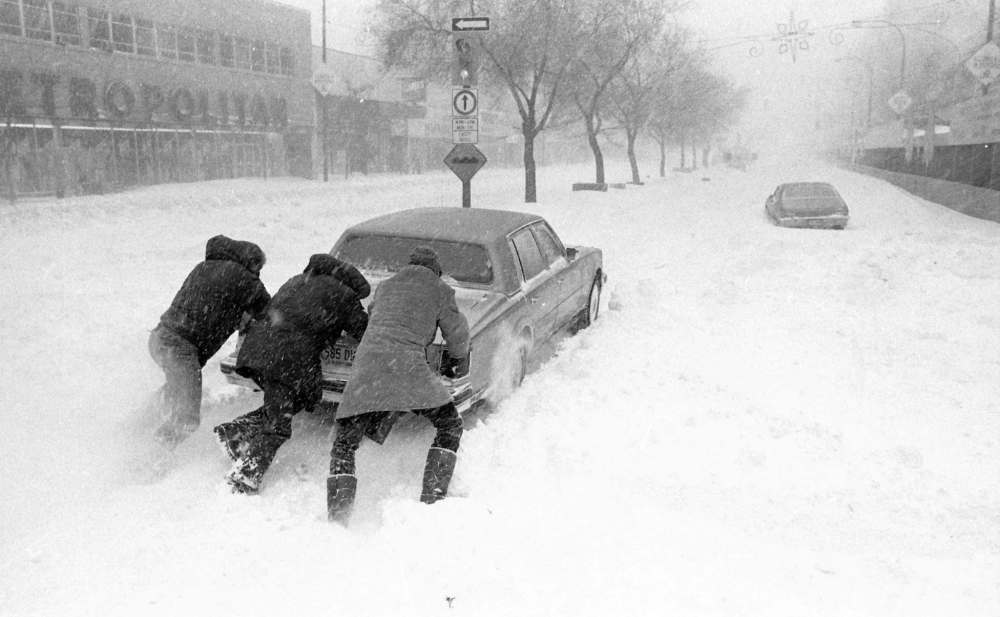
“I woke up on Saturday, looked out the window, and thought ‘Ah, a day off,’” he said. “I got a call informing me in no uncertain terms that I should go and open up the store anyway… I had to duck my head as I passed the underpass just before Confusion Corner — that underpass was like being in a huge snow and iron cave.”
Vatnsdal, after arriving at work, “sat there all day just for maybe one particularly responsible customer to come in and return a tape.”
Bill Peters recounted a scene involving an American businessman who arrived at the St. Boniface Hospital Research Centre, where Peters worked, for a meeting that was cancelled.
Chatting with a security guard at the front door, Peters said a cab dropped off the businessman “obviously straight from the airport, underdressed in a suit.” “After being told his meeting was cancelled, he re-flagged his taxi, who knowingly hadn’t left, and tried to navigate down the front steps, which were blown in with ice,” Peters said. “His patent leather shoes had no grip; he feet went straight up and he landed on his briefcase, which split open. A gust of wind blew the paper contents down the lane in an instant.”
“The security guard looked at me and said ‘welcome to Winnipeg.’”
Gloria — not her real name as per her request — was a second-year nursing student in Selkirk. Saturday was her day off, but she was awakened and told to report to the ward she had been working at for only a few weeks. After arriving, it was clear she was in for a hard-working weekend.
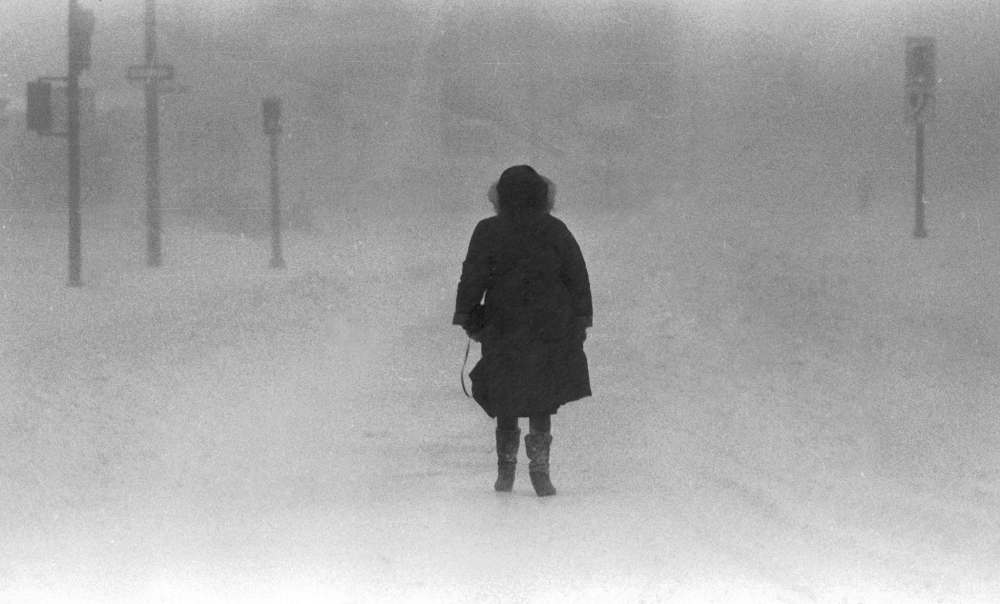
“Once there, it was myself and an aide,” she said. “No cook, no cleaner, or any other staff with about 60 chronic patients.”
“I was there for four solid days before any more staff was able to get in. Made all the meals, got a couple of patients to make beds. Did all the medications and all other care needed. It was an exhausting, but memorable time. Even found some time to play the piano and have a singalong.”
When asked if she felt proud and accomplished after the fact, Gloria was modest. “You do what you have to do,” she said.
Many everyday folks played hero that weekend, most notably, snowmobilers.
With roads impassable — snow-clearing crews tried in vain to keep them open on Friday night, but abandoned the pursuit — the city allowed snowmobilers to take to the streets to keep critical supplies and essential workers in transit. Images of isolated sleds in normally bustling urban spaces are perhaps the storm’s most striking.
One of those snowmobilers was Nancy Bishop, who with her girlfriend travelled up and down Portage Avenue delivering milk, baby food and other necessities.
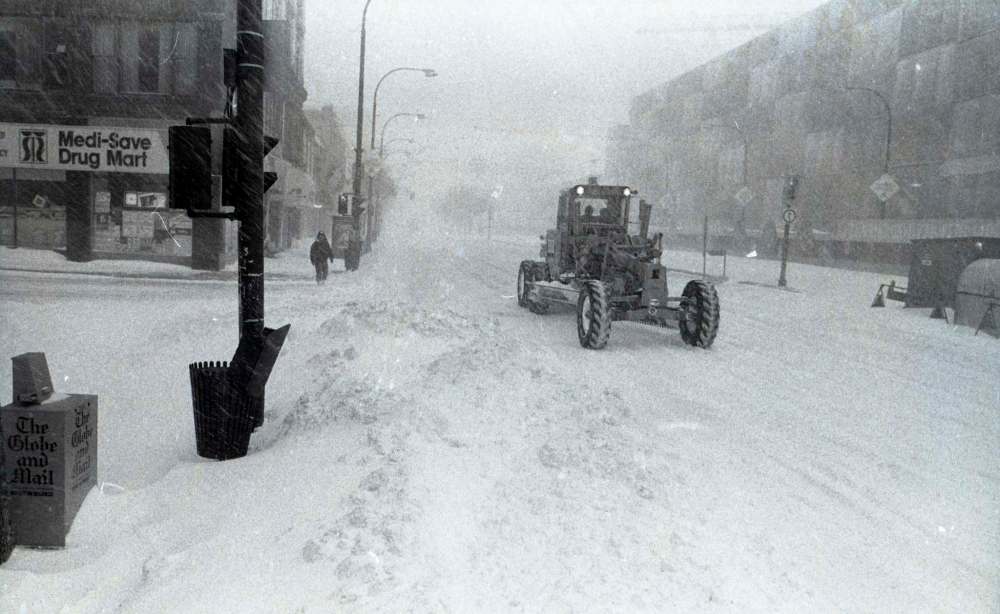
Acts of kindness ranged from small to life-saving. One snowmobiler helped Rafe Vogel’s wife get to Food Fare so she could get diapers for their three-month old. “Never got his name, but he was a hero to us that day,” Vogel said.
Another helped Esther Gerbrandt’s sister get to Misericordia Hospital to get her appendix out after she started experiencing stomach pains. Yet another helped Sheryl Chochinov, a nurse at Seven Oaks Hospital, get to work so she could assist in delivering three babies.
Not every expectant mother made it to hospital in time, a Nov. 9 article headlined City shuts down noted. Paramedics ended up delivering two babies (safely) right in their ambulances.
Paola said the worst weather always brings out the best in Winnipeggers.
“It brings people together and everyone’s in the same boat so everyone’s trying to help each other out,” he said.
The storm was all over by Sunday, but then came the “massive week-long excavation,” as the front page of the Nov. 9 Free Press put it. The city issued advisories to stay off the roads and then-mayor Bill Norrie made Winnipeg Transit rides free for Nov. 10.
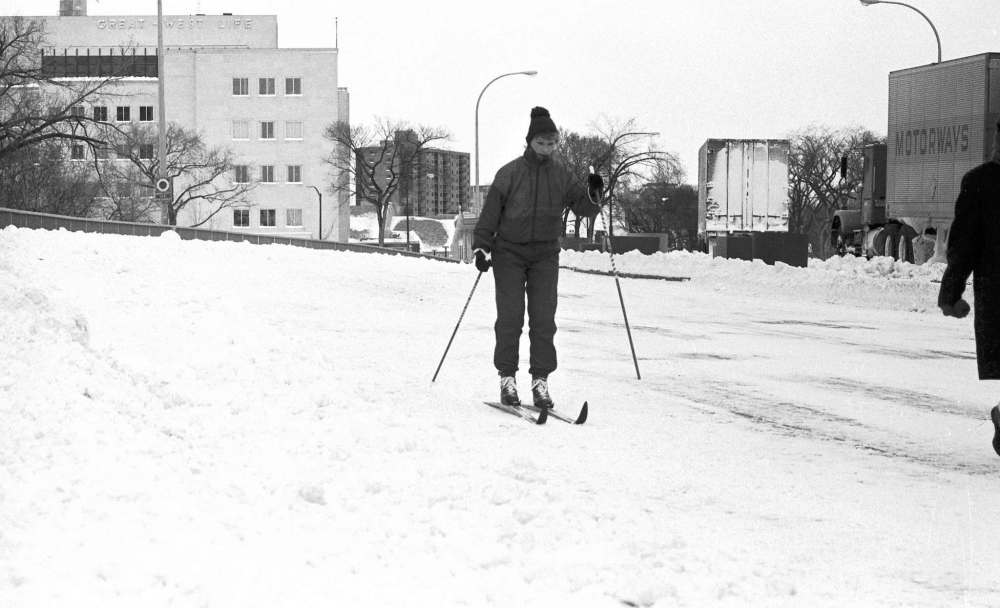
Even working around the clock, it took the city’s fleet of 300 snowplows an entire week to clear the roads.
One thing the storm couldn’t stop was hockey. The Sunday Jets game went ahead as scheduled, with the home team crushing the Devils 8-1 powered by a Thomas Steen hat trick. The official attendance was 10,722 but the Free Press estimated there were actually 5,000 people there.
Winnipeggers should be thankful whenever there aren’t big Colorado Lows in November, Paola said, because a storm like the blizzard of 1986 can occur on any given year.
“As we go through November, this is the time of year Colorado Lows can really impact this part of the world. November is notorious over the Great Lakes for strong storm systems,” he said.
“We can get Colorado Lows anytime of the year, but the most significant ones are usually in the transition seasons — late fall, and then in the springtime as well,” he continued. “In that transition period in October and November… you have mild air over the eastern U.S. and the Great Lakes, you have cold air over the western Prairies. You have this storm track that separates these two air masses.”
Colorado Lows ride up that storm track and, due to the contrast between the air masses, can create blizzards such as in 1986, and create lifelong memories along with it.

And here’s a twist for the end of the story: Winnipeg may well have dodged the worst of a Colorado Low this weekend and won’t have to dig out like 34 years ago.
If the forecast from Thursday morning (the deadline for this story) holds up, provinces west of Manitoba and the northern part of the province have been — or are being — pummelled by snow as you read this today. A Wednesday-evening Weather Network article reported the storm could bring 30 to 60-plus centimetres to locales in southern Alberta and Saskatchewan.
Winnipeg was forecast to stay on the warm side of the Colorado Low, with Thursday’s forecast calling for 17 C and showers for today.





